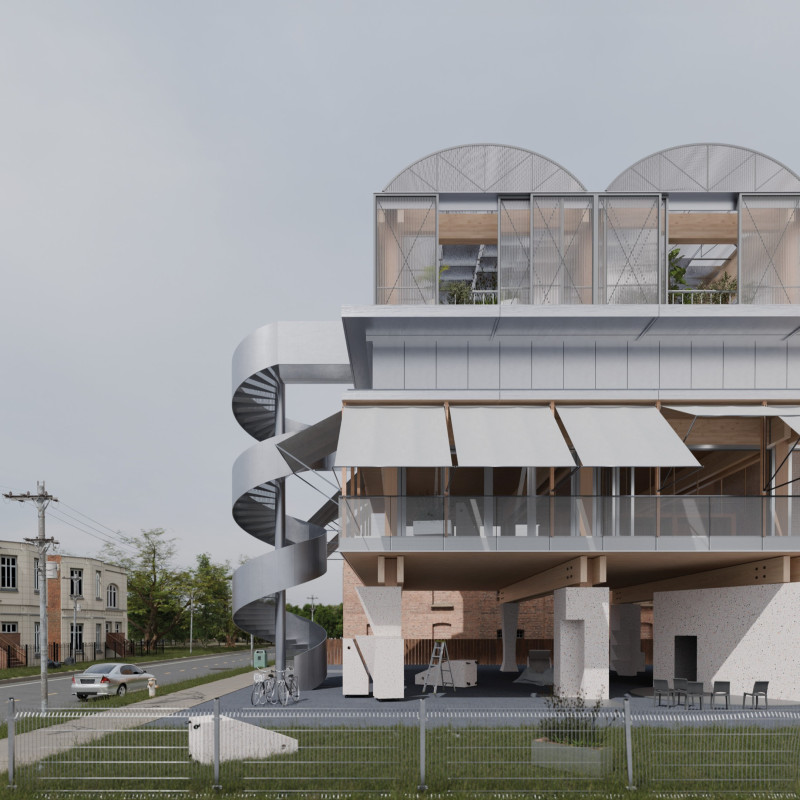5 key facts about this project
At the heart of the project is an overarching concept that merges functionality with place. The building's core uses are articulated through a series of interconnected spaces that promote interaction and accessibility, ensuring that users can easily navigate and engage with every area. The design prioritizes an open floor plan, enabling a seamless flow between indoor and outdoor environments. Generous windows are strategically placed to maximize natural light, fostering an inviting atmosphere that encourages socialization while minimizing reliance on artificial lighting.
Materiality plays a crucial role in defining the character of the architecture. The project employs a harmonious blend of materials, including locally-sourced timber, concrete, glass, and steel. The use of timber not only adds warmth to the façade but also aligns with the focus on sustainable building practices. Concrete elements provide structural stability while echoing the industrial nuances of the surrounding area. Glass is extensively used to create transparency, allowing unfiltered views of the landscape and enhancing the relationship between the structure and its natural surroundings. Steel details add a modern contrast, embodying an efficient, utilitarian approach that resonates with the project's overall theme of balance and harmony.
The design outcome is characterized by its unique approach to environmental integration. The building's roof features a green terrace designed to support local flora and fauna, contributing to biodiversity while providing a space for occupants to engage with nature. This feature not only enriches the user experience but also aligns with broader environmental goals, capturing rainwater for irrigation and promoting energy efficiency through natural insulation. Additionally, terraces and overhangs are utilized to provide shade, reducing energy consumption in warmer months while enhancing exterior usability.
Unique design approaches are evident throughout the project, where innovative solutions address common architectural challenges. One notable aspect is the building's orientation, which has been meticulously planned to optimize solar gain while preventing overheating during peak summer months. This thoughtful positioning reflects an understanding of passive design principles, effectively reducing the building's overall carbon footprint and operational energy demands.
Landscaping complements the architectural design, establishing a cohesive relationship between built and natural environments. The integration of hardscape and softscape elements creates inviting outdoor spaces that encourage leisure and interaction. Pathways seamlessly connect various areas, inviting exploration and engagement with the landscape.
Overall, this architecture project stands as a testament to modern design sensibilities, embracing the principles of sustainability and community engagement without compromising on aesthetic value. The careful consideration of materials, spatial organization, and environmental integration results in a structure that is not only functionally effective but also visually appealing and contextually relevant.
For those interested in diving deeper into the architectural specifics, including the architectural plans, architectural sections, and architectural designs that further elucidate the project’s intricacies, exploring the project presentation will provide more comprehensive insights into this compelling architectural endeavor.


 Yifan Shen,
Yifan Shen,  Yue Zhuo
Yue Zhuo 




















